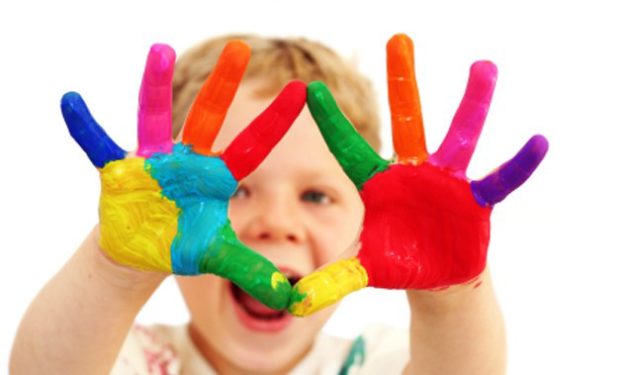Child Therapy – Ways to Naturally Develop Children in Your Care

Wondering about the best ways to help naturally develop children? Here are a few ways to help them explore their world, develop their creativity, and express themselves at the same time.
EXPERIENCE TEXTURES
Infants are known to be sensory-learners that learn to research their surroundings through touch, smell and taste. Or by simply walking around, exploring as much as possible fueled by curiosity. An educative practice would be tracing of letters and numbers onto huge pieces of paper only to fill these with sandpaper, beans, cotton balls, pipe cleaners or even pastas with the little one.
Through touch the children will observe the shape of the letter and start making associations. In the process pronounce the letters and numbers out load. These associations will grant the child the ability to recognize lettering and numbering in coloring books, bed-time stories and cartoons.
DOODLE, COLOR AND DRAW
To doodle and color with your little one is pure joy. And in essence one of the must powerful, educative, and fun tools that a parent has at his disposal. In the earliest steps of the process, in the doodling phase, a child`s coordination is being fine tuned with every line, every swipe as the little one`s imagination is being materialized and the little one attempts to fine tune finger, wrist and arm movement till control is achieved.

The next represents the conceptualization, a period in which the child simplifies reality through geometric associations, geometric primitives. The individual on paper might be a circle and 5 lines where the sun is a circle with numerous needles, rays, all around.
To build on this extraordinary educative practice the child ought to be encouraged through the power of example. Color by their side, use super simple drawings in the beginning and talk about what you are doing in the process. Talk to them, express joy in color and lines and he will soon follow.
MEASURING UP
The measuring process happens for an adult often yet the child needs time and practice to learn it. And while the most common way to teach an infant this simple process would be a ruler, it is recommended to start with seasons, months and time of year to make the process interesting. That provides powerful non-abstract associations and examples the child can grasp. Having your child lie down on the grass and measuring him with a line of apples at certain ages could be something memorable. He might never forget that at six he was 25 apples tall, 45 legos tall or 12 wooden blocks wide.
Simple associations could be made to emphasize movement, pro-active development and curiosity. Make the measuring of a bed with books fun. And always make sure you use different items in the process while you also count out-loud for the child to hear. It is highly important to change the setting as much as possible, to make the process as educative and as fun as possible.
CREATE LABELS IN YOUR HOME
One or two labels can be used on simple items such as your refrigerator, windows and chairs and can be an interesting educative experiment. These labels should be magnetic and the parent ought to rotate the labels every week or month. All should be the same, basic fonts for the children to identify the objects and change that occurs every now and then.
Printing, typing or cutting out individual words and positioning them onto object for easy identification also helps. The symbols will become recognizable for the child especially if the parents pronounce them out-loud often while in their company.
START ORGANIZATION EARLY
The organization in one’s home and in one’s life is utterly important and parents ought to build on this skill early, even with the risk of slowing down house chores or activities. Labeling everything that can become an organizer for toys, clothes dishes or any other specific household items helps. And creating these places where they’re not truly present builds up on that, opens new opportunities, and creates something new.
By simply asking a child where the toys are stored, where should they be, the parent summons an association that the child has to make. And in time, that creates a natural connection between actions. Thus de-cluttering one’s space and life become related.
Organize everything as thoughtfully as possible and be prepared. As Bridge A. Barnes and Stephen M. York, authors of Common Sense Parenting of Toddlers and Preschoolers have said : “these tasks give you a way to begin teaching your young children about responsibilities, helping others, and being part of a family.”

Image Courtesy of homesthetics
Image credits
Main Art

